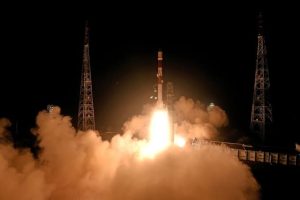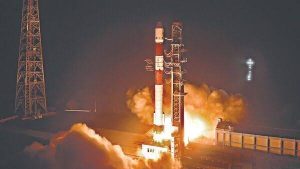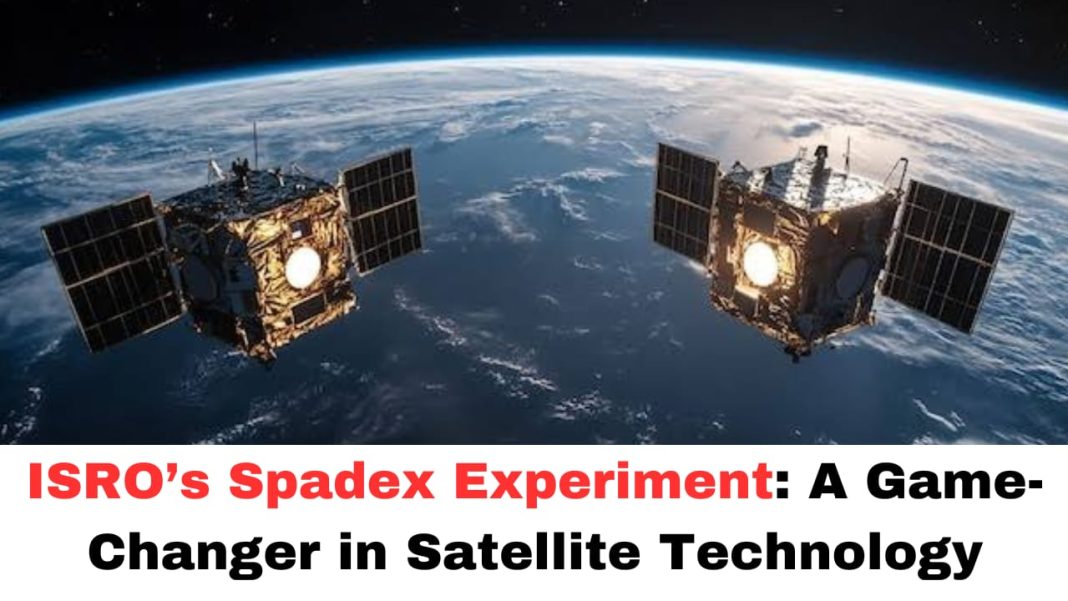Digital News Guru Technology Desk:
India is poised to achieve a significant milestone in its space exploration efforts with the upcoming docking of two satellites in orbit—a feat previously accomplished only by the USA, Russia, and China. This endeavor is part of the Indian Space Research Organisation’s (ISRO) Space Docking Experiment (Spadex). The satellites were launched on December 30, 2024, and the docking is scheduled for January 7, 2025.
What is Spadex Mission?
Spadex involves two small satellites, designated SDX01 and SDX02, which will perform autonomous rendezvous and docking maneuvers in low Earth orbit. This mission aims to demonstrate critical technologies essential for future space endeavors, including satellite servicing, space station operations, and interplanetary exploration.

Significance of the Experiment
The successful execution of Spadex will position India among a select group of nations with the capability to perform in-orbit docking. This technology is vital for several future projects:
- Human Spaceflight: Docking technology is crucial for assembling and operating space stations, which are integral to sustained human presence in space. ISRO’s plans to build a space station by 2030 will benefit significantly from the success of Spadex.
- Lunar Sample Return Missions: The ability to dock spacecraft in orbit is essential for missions that aim to collect and return samples from the lunar surface. ISRO has set a goal to bring lunar samples to Earth by 2027, and the technologies demonstrated in Spadex will be instrumental in achieving this objective.
- Satellite Servicing: In-orbit docking capabilities enable the repair, refueling, and upgrading of satellites, thereby extending their operational lifespans and enhancing the sustainability of space assets.
Technical Details
The Spadex mission will showcase several key technologies:
- Autonomous Rendezvous and Docking: The satellites are equipped with advanced navigation systems, sensors, and thrusters to perform the docking maneuver without human intervention.
- Power Transfer Post-Docking: After docking, the satellites will demonstrate the transfer of electrical power between them, a capability essential for future in-space operations involving robotics and other applications.
- Payload Operations: Post-docking, the satellites will conduct independent payload operations, including advanced imaging and radiation monitoring, which are pertinent to future human spaceflight missions.
Collaborations and Innovations
A notable aspect of the Spadex mission is the collaboration with the private sector. Ananth Technologies, a private company, was responsible for the integration and testing of the satellites, marking a significant shift in India’s approach to space missions by involving private entities in critical aspects of space technology development.
Future Prospects
The success of Spadex is expected to pave the way for several ambitious projects:
- Gaganyaan Mission: India’s first crewed space mission, Gaganyaan, scheduled for launch in the coming years, will benefit from the technologies demonstrated in Spadex, particularly in terms of docking and rendezvous capabilities.
- Bharatiya Antariksha Station: The planned Indian space station, targeted for completion by 2030, will require sophisticated docking technologies for its assembly and operation. The success of Spadex will be a critical step toward realizing this goal.
A History of Achievements
India’s foray into space exploration has been marked by ingenuity and resourcefulness. From the success of its Mars Orbiter Mission (Mangalyaan) to the recent Chandrayaan-3 lunar landing, ISRO has consistently pushed boundaries, often achieving results at a fraction of the cost incurred by other space agencies. Spadex builds on this legacy, showcasing India’s ability to compete in cutting-edge space technologies.
Notably, Spadex represents a continuation of India’s journey into sophisticated orbital mechanics. The country has already mastered challenging maneuvers like orbital insertions and interplanetary trajectories. Docking adds another layer of expertise, signaling India’s readiness for even more complex missions.

Conclusion
The Spadex mission represents a pivotal advancement in India’s space exploration capabilities. By successfully demonstrating autonomous in-orbit docking, ISRO will not only join an elite group of spacefaring nations but also lay a robust foundation for its future endeavors in human spaceflight, lunar exploration, and sustainable satellite operations. As the scheduled docking date approaches, the global space community keenly anticipates the outcomes of this landmark experiment.
You May Also Read: “Pushpa 2: The Rule” Dominates Box Office, Nearing 2,000 Crore Milestone









